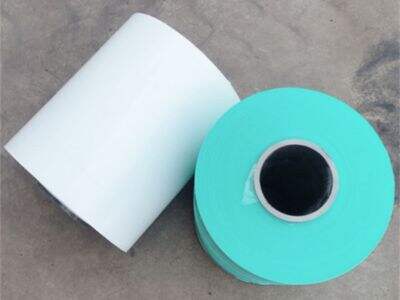Silage film is a type of agricultural film made with linear low density polyethylene: These are used for grass storage in which the forage is removed from fields at its maximum nutritional value peak and then stored as silage, providing nutritious feed all year long Pest resistance: it seals out air while becoming anaerobic, preventing bacteria process and reducing pests and diseases breakouts due to killed aerobic bacteria. One decision farmers will need to contemplate is how thick the film should be when it comes time for silage. Both options do have their own benefits and drawbacks, which you should consider before making a decision.
Quality and durability vs cost and environmental impact.
Thicker, ultra-strong silage film is appreciated for its long life expectancy and maximum retention of freshness amid adverse weather conditions. It offers added protection against oxygen and moisture, both of which are the number one foes of good silage. Thicker film is less likely to puncture and tear which ensures silage is tightly sealed and preserved.
Thicker film is costlier as opposed to thinner movie, on another palm. So using a thicker film is going to cost more money for the farmers. Furthermore, thicker film may produce more environmental impact as it uses more material to make. This is something farmers need to take into account when deciding on thicker or thinner film choices.
More affordable and easier to manage, but less resistant to punctures and tears
Thinner silage film can also be a cost saver and is easier to handle than thick film. It is lighter weight and more convenient for farmers to apply and take off. A Pudi silage stretch film gives greater elasticity and stretch, helping to grip the silage better.
Thinner film, however, is also more able to be punctured or tears which may contaminate the silage. Farmers need to take greater care with handling thinner film so not to damage it as this may allow the flock through walls, particularly the plastic.
Oxygen and moisture, apply and remove harder
It is fact that thicker silage film provides a better barrier to oxygen and moisture, preserving the freshness and nutrition of the silage for longer. Remediation is key to preserving the integrity of animal feed with regard to optimal nutritional parameters for maintaining the health and well-being of the livestock.
However, the thicker film is perhaps a touch trickier to apply and remove than if it was thinner. The process of wrapping the silage properly is demanding and as well time consuming, a shortcoming for a farmer who seek fast and easy solutions.
Lighter weight, making it easier to move but potentially offering less protection when not in use.
In addition, it can be a good choice for farmers who have to haul and stack miles and miles of silage film, due to the simple reason that thinner silage film is lighter. It is more flexible thus easier to wrap around the silage.
In contrast, a weaker film could be less protective of the product in storage when compared to a thicker film. That is vulnerable to punctures and tears causing oxygenation of the silage, as well as susceptibility to rainfall. The silage quality will degrade with time and the same will follow as degradation of the silage is thus leading to spoilage.
How To Choose The Right Silage Film Thickness For Your Operation?
For this reason, it is essential that each producer evaluates his requirements in order to have an efficient performance and obtain the most suitable silo film for it. There are so many elements at play in determining this decision including the type of Pudi silage plastic wrap being preserved, how it will be stored and the budget.
Thicker silage film may be the best option for some farmers to guarantee the highest protection and longevity of the silage. Thinner film may be the way to go for others, despite offering a small amount of less protection — Read More By weighing all of these factors together, farms can make an educated decision on the correct silage film thickness is for their operation.
To sum it up, the decision of thicker or thinner silage film depends on factors such as durability, cost, environmental impact convenience of handling and level protection required. When all these factors are taken into consideration and the particular requirements of their set-up, farmers can easily select what thickness in silage film is going to work best for them. With the thicknesses of foil, or silage film Pudi offers a wide range for every farmer with precision or higher strength.
Table of Contents
- Quality and durability vs cost and environmental impact.
- More affordable and easier to manage, but less resistant to punctures and tears
- Oxygen and moisture, apply and remove harder
- Lighter weight, making it easier to move but potentially offering less protection when not in use.
- How To Choose The Right Silage Film Thickness For Your Operation?

